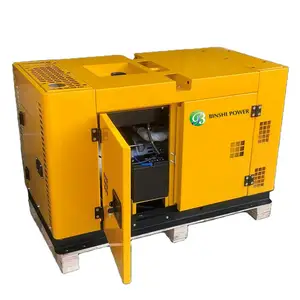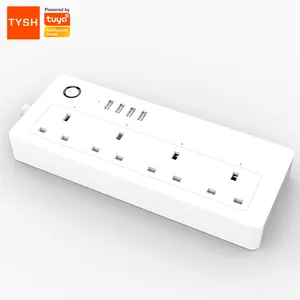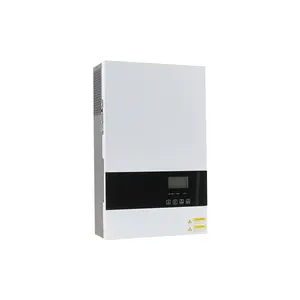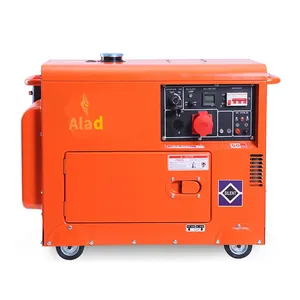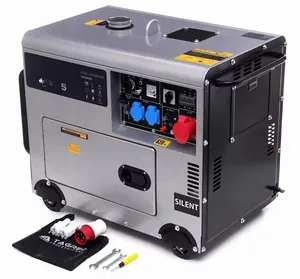Popular in your industry



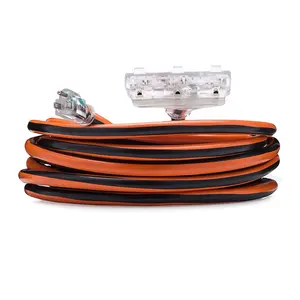






































































Related Searches:


















































































































































Top categories
About australia flat extension cord
In an era where electrical devices are at the heart of both our homes and workplaces, the need for safe, efficient, and adaptable power solutions is paramount. Australian flat extension cords represent a critical component in meeting this demand, offering a blend of convenience and safety that is tailored to a variety of settings. This guide delves into the nuances of flat extension cords, from understanding their construction and features to selecting the right type for your needs on platforms like Alibaba.com. Whether you're outfitting an office, setting up a construction site, or simply ensuring your home setup is powered effectively, this ultimate guide to Australian flat extension cords will steer you towards making informed decisions for your power supply needs.
Understanding Flat Extension Cords

Flat plug extension cords are a convenient solution for powering devices far from outlets, commonly used in homes and offices. They come in various wire gauges, with lower AWG numbers indicating thicker, more capable wires for delivering power. The plug type is also essential, with three-pronged plugs offering grounding and increased safety over two-pronged alternatives.
The length of the cord is crucial; shorter cords are typically better for maintaining voltage over distances, making them suitable for high-powered appliances. Amperage rating is another critical factor, ensuring that the cord can handle the device's power requirements without overheating, which can lead to melting and potential fire hazards.
When choosing a flat plug extension cord, it's important to consider the wire gauge, plug type, cord length, and amperage rating to ensure safety and functionality. These cords offer the convenience of reaching distant devices and the flexibility to navigate around obstacles, making them a practical choice for various settings.
Types of Australian Flat Extension Cords
Australian flat extension cords come in various types to cater to different electrical needs. The standard single-phase 230 V domestic socket outlets are commonly rated at 10 A, suitable for most household and office appliances. For more demanding applications, there are heavy-duty variants with current ratings up to 32 A. These are designed to accommodate larger appliances, such as electric ovens commonly found in domestic kitchens. It's important to note that plugs are designed to fit into sockets of the same or higher rating but not into sockets with a lower rating.
A unique feature of some Australian flat extension cords is the 'socket adapter plug', known colloquially as a 'piggy-back plug' in Australia or a 'tap-on' plug in New Zealand. These allow for the connection of an additional appliance to the same outlet and are available as part of a pre-assembled extension cord. Special-use variants also exist, such as those with a round earth pin for circuits like storage heaters, and a 110 V version with round active and neutral pins for specific lighting equipment.
When selecting a flat extension cord, it's crucial to consider the compatibility of the plug and socket, especially with the presence of variants like the NEMA 7–15 connector, which is physically compatible but electrically incompatible with certain Australian sockets. Careful attention to the arrangement of pins is necessary to ensure safety and proper function, particularly in settings where international standards may differ.
Applications in Various Industries
The AS/NZS 3112 standard power cord and plug configurations are integral to a variety of applications across different industries. Specifically, the variant with a round earth pin is designed for connection to special purpose power circuits. This type of plug is commonly employed in settings that require reliable and consistent power delivery, such as in lighting systems, exhaust fans, and cash registers. Additionally, they are crucial in the IT sector, ensuring that sensitive electronic equipment is powered safely and efficiently. The adaptability of these plugs to various power needs, combined with their compliance with safety standards, makes them a versatile solution for a broad range of industrial applications.
Key Features of High-Quality Flat Extension Cords
High-quality flat extension cords are characterized by several key features that ensure safety and efficiency. The wire gauge, an essential aspect, determines the capacity for power delivery. A lower American Wire Gauge (AWG) number signifies a thicker wire, capable of delivering more power, suitable for heavy-duty appliances. Conversely, a higher AWG indicates a thinner wire, designed for less demanding devices. The plug type is also crucial; a three-prong plug, grounded, is preferable for safety, reducing the risk of fire or electric shock. The length of the cord is another consideration; shorter cords are recommended for maintaining voltage integrity over distance, especially for high-power devices. Lastly, the amperage rating of the cord must match or exceed the power requirements of the connected devices to prevent overheating and potential hazards. These features combined contribute to the reliability and safety of flat extension cords.
Material and Design Considerations

Flat extension cords are designed with user convenience and safety in mind. The cords mentioned are encased in a flexible, weather-resistant vinyl SJTW jacket, which not only provides durability but also ensures flexibility across various conditions. The vivid neon colors of the cords serve a practical purpose beyond aesthetics; they enhance visibility to minimize the risk of tripping and make the cords less likely to be misplaced or stolen. The importance of weatherproofing is also highlighted through UV-resistant plug protectors, which shield the cord connectors from environmental elements like moisture, dirt, and dust, as well as from accidental disconnections.
The design considerations for these flat extension cords include their thickness, which typically ranges from 1 to 1.25 inches, providing a balance between protection and low-profile placement to avoid creating trip hazards. While the cords are flexible, they are not suited for sharp 90-degree bends, indicating that the material and design are optimized for straight runs or gentle curves. The length specifications of these cords are focused on the cord cover itself, ensuring that users are aware of the exact measurements of the protective covering, separate from the extension cord that may extend beyond it.
Advantages of Using Flat Extension Cords
Flat plug extension cords offer a blend of convenience, safety, and flexibility, making them a preferred choice for powering devices. Their design allows for easy maneuvering around obstacles, and they can be secured with adhesive tape to keep them in place. This convenience factor is a significant advantage over traditional rounded cords.
Safety is another key benefit. Flat extension cords are typically low-profile, which means they can be laid out flat against surfaces, reducing tripping hazards in high-traffic areas. Their structure also allows them to be less obtrusive, contributing to a safer environment overall.
The flexibility of flat plug extension cords is notable as they can be easily coiled and uncoiled, which is particularly useful in tight workspaces. Their low-profile nature, combined with durable molded connectors and plugs, often results in a longer-lasting product that doesn't require frequent replacement.
In summary, flat plug extension cords are a safer alternative to traditional cords when used correctly. They are designed to be less intrusive and more adaptable to various spaces, ensuring that they can be used safely while providing power where it is needed.
Safety Standards and Certifications
In Australia, the safety and compliance of flat extension cords are governed by stringent regulations and standards. These cords must adhere to the AS/NZS 3112, AS/NZS 3120, and AS/NZS 3012 standards, which are specifically designed for electrical installations on construction and demolition sites. These standards ensure that the extension cords are capable of withstanding the rigorous demands of such environments. Additionally, the Queensland Electricity Regulations sections 188 to 190 outline the requirements for electrical equipment, including extension cords, emphasizing the necessity for proper electrical work to be performed by licensed contractors or workers. This is crucial for maintaining safety and functionality, particularly when it comes to the risk of voltage drop and the correct operation of safety devices like Residual Current Devices (RCDs). The regulations highlight the importance of using extension cords with appropriate conductor size to prevent safety devices from malfunctioning due to high fault loop impedance. For those considering the DIY assembly of extension cords, it's imperative to consult local laws, as regulations can vary by state, with some having stricter rules on electrical work.
Selecting the Right Flat Extension Cord on Alibaba

When selecting the right Australian flat extension cord on Alibaba, consider the variety of options available. Look for cords that meet Australian standards, such as those with certification, which indicates compliance with local safety regulations. The cords come in different lengths, from short 1.2m cables suitable for office environments to longer 20m options for outdoor use. The amperage ratings vary, with some cords capable of handling up to 15A, suitable for heavy-duty applications.
The design of these cords often includes features like 360-degree rotating flat plugs, which provide flexibility and ease of use in tight spaces. For specific applications, there are cords with unique characteristics such as retractable cable retractors or built-in surge protectors. Materials used in these cords range from durable metal power strips for industrial environments to fabric-braided cables for enhanced durability and aesthetics.
When browsing Alibaba, you can find extension cords with different plug types, including 2-prong and 3-prong configurations, to match the equipment you intend to use. Some cords offer additional functionality, like built-in USB ports or splitter power cords with switches, catering to a variety of power needs. Always ensure that the cord you select has the appropriate plug type and voltage rating for the devices you plan to connect.
Conclusion
In conclusion, Australian flat extension cords are a linchpin in the realm of power distribution, balancing safety, functionality, and convenience. With a comprehensive understanding of their types, applications, and key features, consumers can make educated choices that align with industry standards and personal requirements. The importance of adhering to safety standards and certifications such as AS/NZS 3112 cannot be overstated, ensuring that these cords can withstand the demands of various environments while safeguarding against potential hazards. When selecting a flat extension cord, especially from online marketplaces like Alibaba, attention to detail in terms of length, amperage, and design features is crucial. By prioritizing cords that meet Australian regulations and cater to the specific needs of your devices and settings, you can ensure a reliable and safe power solution. Remember, the right flat extension cord is more than just an accessory; it's an investment in the seamless operation and safety of your electrical systems.

